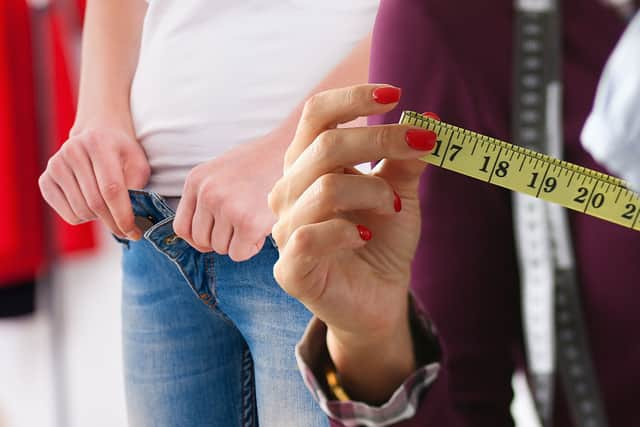What is vanity sizing? How dress sizing works and why clothes might fit differently depending on the shop
and live on Freeview channel 276
There’s nothing more frustrating than seeing a piece of clothing in a shop - the only one in your size, then trying it on to find it doesn’t fit.
The zip won’t do up, the legs are too tight, or maybe it just swamps you - the label has your size on it, but clearly something is amiss.
But it’s not you.
Advertisement
Hide AdAdvertisement
Hide AdBecause on a trip to another shop a similar item in the same size fits perfectly. Yet the online order you placed with a popular fast fashion brand will need to be returned as everything is too small.
It’s a common story - but why are sizes so erratic? Do manufacturers use ‘size inflation’ to bolster sales? Is there such a thing as a standard size? Here’s what you need to know.


Is there such a thing as a standard size?
There are standards for men’s, women’s and children’s clothing.
The British Standards Institute says as they are standards they are voluntary and not legislation. The standards are aimed at the manufacturer and retailer and relate to how and what dimensions should be measured for clothing,
Advertisement
Hide AdAdvertisement
Hide AdThere is a British Standard specification for women’s sizing - BS 3666:1982.
However, it is is rarely followed by manufacturers as it defines dress sizing in terms of hip and bust measurements only within a limited range.
Meanwhile, the UK Fashion and Textile Association (UKFT) states: “There are no standard sizes in the industry. This is for a very good reason – the human body does not come in a standard size.”
Why does sizing between different retailers vary?
Sizing systems vary by country, and there are different approaches. One of which is ad hoc sizing where a number or code with no obvious link to measurement is used.
Advertisement
Hide AdAdvertisement
Hide AdThis is the type we most frequently see on our clothes labels, for example 10 or S.
But surely those sizes would be uniform regardless of where you shop? Not really.
Differences developed as a result of varying sizing methods between different manufacturers made for different countries.
Changing demographics and body shapes and weight have also played a part.
As a result something known as vanity sizing developed.
Advertisement
Hide AdAdvertisement
Hide AdWhat is vanity sizing?
Also known as size inflation it’s when clothing in a nominal size becomes bigger over time but retains the same size number.
It has been described as ‘the practice of assigning smaller sizes to articles of manufactured clothing than is really the case, in order to encourage sales.’
And the differences created by such sizing practices have led to situations where someone might be for example, a size 12 in one outlet and 16 in another.
Editor of FashNerd, Muchaneta Kapfunde, told fashionunited.uk: “The worst kept secret has been that fashion brands are guilty of shifting their metrics to make shoppers feel skinnier. This is effectively the rise of so-called vanity sizing,”
Advertisement
Hide AdAdvertisement
Hide AdWhat impact can such differences in sizing have?
Over the years average sizes have changed with women now taller and curvier than their counterparts from decades past. Currently the average dress size for a woman in the UK is a 16, while in the 1950s it was a 12.
For many although they know they have not physically altered or changed shaped - not being able to fit into something marked as your size can be incredibly damaging.
Writing for Women’s Health plus-size model and body confidence campaigner Felicity Hayward said: “Ignore the size labels – if the high street sizing guide wasn’t already a headache in various shops, we now have a thing called Vanity sizing, in which certain stores are reducing the sizing labels, but keeping the same measurements, so in turn you will appear to be a size smaller in their store.”
Comment Guidelines
National World encourages reader discussion on our stories. User feedback, insights and back-and-forth exchanges add a rich layer of context to reporting. Please review our Community Guidelines before commenting.
